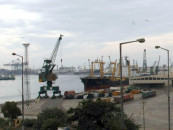Industrialists switch to alternative power
Some have reduced operating costs through economies of scale.

Massive investments were made in captive power plants by manufacturing stalwarts during the last decade when there were both surplus gas and huge exports orders. But these plants largely remain inactive due to non-availability of gas in Punjab. Although, coal is more expensive than gas, it is still seems to be the most feasible option now as the energy source keeps industries running 24/7.
Azhar Corporation CEO Hassan Munawar said, “About 70% industrial capacity is closed since the energy crisis hit the province. We are incapable of competing with similar industries in other provinces because they enjoy better gas supplies and lower electricity load-shedding.” Moreover, he explained that some industrialists have reduced operating costs by researching economies of scale.
Manufacturing sector of Faislabad has started using coal plants imported from China as a substitute and due to its uninterrupted supply, factories were actually able to expand production, he added.
Hassan Limited CEO Umer Nazar Shah observed that transitioning to coal plants was the only survival option for the industry, however, increasing operating expenses by 20% as natural gas in unavailable.
The cost of running generators amounts to be 60% higher than gas-based plants. To operate a mill at full capacity, this option requires capital injection between Rs20 million to Rs30 million and textile industry is seriously looking into coal plant generation to deal with power crisis in these critical times.
Expenditure incurred by coal plant is Rs8 per unit compared to Rs6 per unit incurred by gas generators and electricity including charges for textile industry is Rs13 per unit whereas, the cost of diesel generator and furnace oil is Rs32 per unit and Rs20 per unit respectively.
Additionally, Small and Medium Enterprises Development Authority (Smeda) Business Coordinator Zulqarnain Shahzad told The Express Tribune that Smeda has facilitated millers by providing free services of qualified energy audit and after improving efficiency in the factories cost of production has significantly reduced. Furthermore, mills that also agreed to pool in minor investments enjoyed maximum benefits.
Published in The Express Tribune, April 28th, 2012.


















COMMENTS
Comments are moderated and generally will be posted if they are on-topic and not abusive.
For more information, please see our Comments FAQ